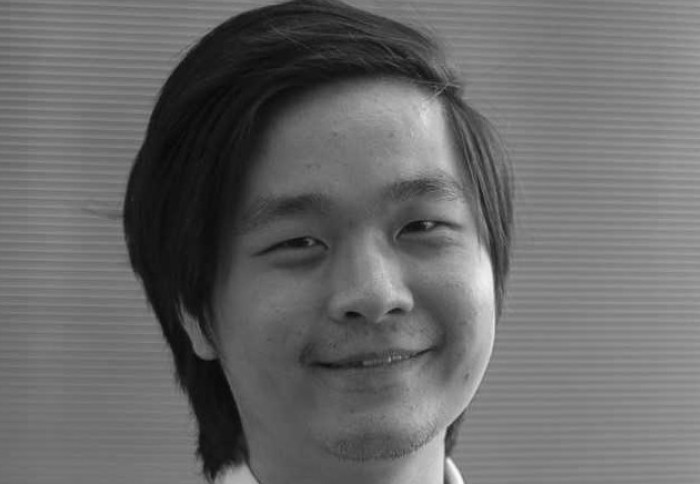Student Profile: Q&A with Kaiming Zhao (MSc Sustainable Energy Futures)
by Zara Qadir

Kaiming Zhao recently graduated from the MSc in Sustainable Energy Futures at Imperial College and undertook his project at the SGI.
We talked to him about the course, his thesis and what he plans to do next.
Can you tell me a little about yourself?
I am from Changzhou, a small town right next to Shanghai. I came to the UK to do an Undergraduate degree in University College London (UCL) in Civil and Environmental Engineering. Growing up in China, I have seen a lot of air pollution, and wanted to find out how we could mitigate the issue. Therefore, I have always been interested in working in the environment sector.
Why did you choose the MSc Sustainable Energy Futures course?
After completing my degree at UCL, I decided to apply for the MSc in Sustainable Energy Futures (SEF) with Energy Futures Lab at Imperial College London as I wanted to specialise in the environment sector. I liked my undergraduate degree, but I was more interested in finding out how renewable energy sources can be used to reduce emissions, rather than how to construct buildings.
What did you enjoy most about the Masters?
I really liked that the course is interdisciplinary, as it combines politics and economics with science and engineering. It’s a really interesting mix, and I liked that the course covers different types of renewable energy (nuclear, solar and wind). I am especially interested in wind energy because wind is an abundant natural resource that can be utilised without causing any damage to the environment. I see offshore wind to have the largest potential to grow in the near future, as more research and investment are going into it.
You did your summer project with the Sustainable Gas Institute, and the MUSE energy team. Can you tell us a little about the project?
I looked at the effect of carbon price on the uptake of decarbonising technologies in the cement industry. It was actually Dr Julia Sachs from the Sustainable Gas Institute (SGI), who proposed that it might be good to use my past experience in civil engineering to focus on the cement production. Dr Sara Budinis also helped with data gathering and suggested I attend the CCUS Cost Challenge Taskforce Report Launch event, which was very helpful to the research.
So why are you interested in the cement industry?
Cement is mainly used to make concrete, the world’s most used product just after water. But around 7% of the world’s anthropogenic carbon emissions come from the cement industry. Global cement production is also expected to increase from over three [3.27] billion metric tons in 2010 to nearly five [4.83] billion metric tons in 2030. In order to meet the 2-degree target set by the Paris agreement, reducing emissions from cement sector is key among all industrial processes.
Did you look at global trends or pick a specific country?
I chose to do a case study on my own country – China, as it is one of the world’s largest producers of cement. In 2016, China accounted for 57% of the global cement production. Although the total demand for cement in China is projected to slowly decrease after 2030 due to a decrease in population, decarbonising the world’s giant cement producer is important in reducing global CO2 emission.
What were the project’s main findings?
Using the MUSE energy systems model, we predicted projections of seven key decarbonising technologies in the cement industry under different carbon price scenarios. MUSE rather cleverly predicts the capacity of each technology and what demand there will be for cement. We found that the current carbon price in China will not be enough to meet the 2050 emission targets; it would need to be doubled from $6 per tonne CO2 emitted to $12.3 per tonne of CO2 emitted. Our second finding was that in the short-term, technology efficiency improvements will be incremental but in the long-term carbon capture and storage (CCS) will have to be implemented. The main product findings are summarised in a poster which I presented at the end of year Sustainable Energy Futures Conference in September 2018.
What did you learn from the project? Why did you choose the project?
I am proud to say that I helped expand the industrial sector of MUSE by adding technology and economic data on decarbonising technologies in producing cement. I really liked the project as it involved carbon pricing and it was really fascinating to see how a policy measure could affect industry. I also learnt about a new coding platform as I’d never used Python before and found some new approaches to data gathering using component analysis.
What are you doing now?
I am looking for a job ideally in the environmental/energy sector perhaps consultancy in renewable energy. I am also open to living anywhere in the world, especially UK or Canada. I went to high school in Singapore and enjoyed learning about different culture and perspectives.
If you want to get in contact with Kaiming, please email him.
Article text (excluding photos or graphics) © Imperial College London.
Photos and graphics subject to third party copyright used with permission or © Imperial College London.
Reporter
Zara Qadir
Department of Earth Science & Engineering